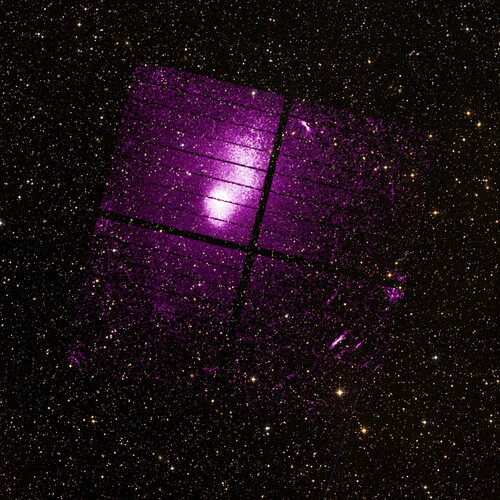XRISM’s first test images show a cluster of galaxies and a supernova remnant – the husk left behind when a massive star explodes. What’s more, XRISM has measured the energy of incoming X-rays from the supernova remnant to reveal the chemical elements contained within it.
The observations showcase the extraordinary capability of XRISM’s two science instruments. They were made during the mission’s ‘commissioning phase’ – when engineers carry out all the tests and checks needed to make sure the spacecraft is working as well as possible.
X-ray images of the cosmos are special. They look very different to the images we are used to seeing in visible and infrared light, such as those from the James Webb and Hubble Space Telescopes. They also convey unique information about the Universe’s most dramatic phenomena, as X-rays are a very high-energy type of light emitted in the hottest and most violent events.
XRISM is a collaboration between the Japan Aerospace Exploration Agency (JAXA) and NASA, with significant participation from ESA. In return for providing hardware and scientific advice, ESA is allocated 8% of XRISM’s available observing time.
“It’s so exciting to see XRISM already carrying out such marvellous scientific observations, even though it is not yet fully calibrated,” says ESA Director of Science Carole Mundell. “It shows the potential this mission offers to our science communities for groundbreaking discoveries in the study of the most energetic phenomena in the Universe.”
“I congratulate the engineering teams at JAXA, ESA and NASA for reaching this important milestone.”



